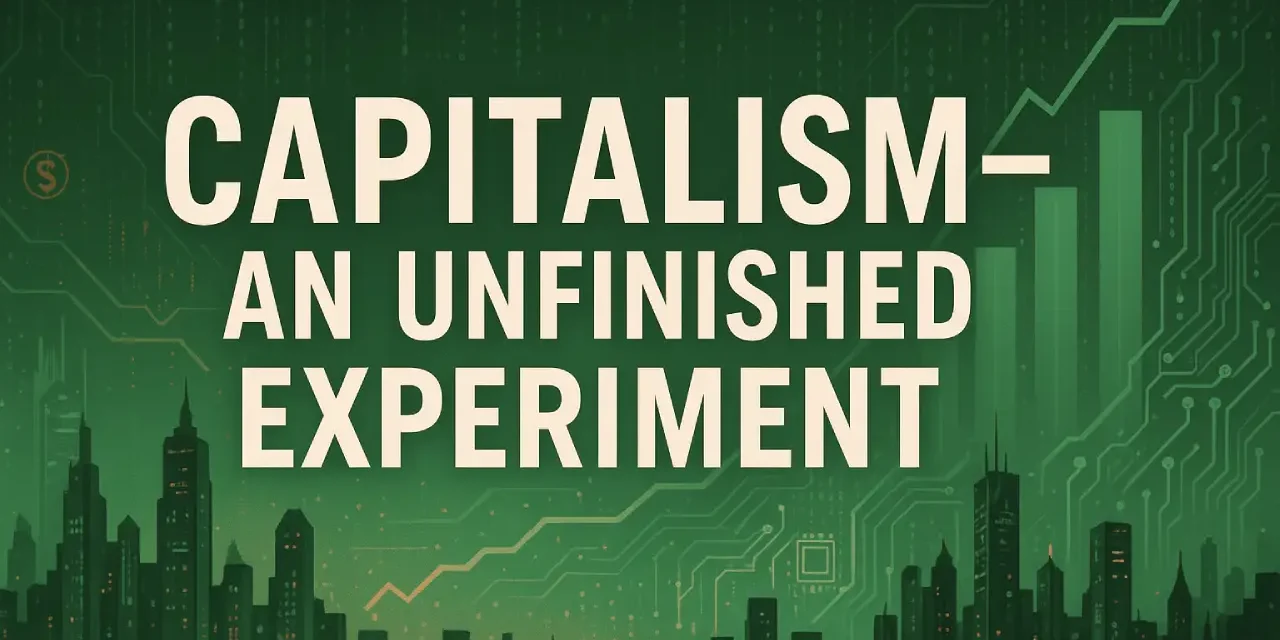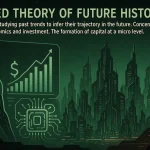Capitalism’s Genesis: From Feudal Soil to Financial Seed
The rise of capitalism was not a single event, nor the product of any one invention or ideology. It was the outcome of long structural transformations—political, social, technological, and moral—that gradually uprooted the medieval world and replaced it with a system based on private ownership, mobile labor, and reinvested profit. Though uneven and contested, this transformation remade the foundations of life in Europe and, over the centuries, reshaped the globe.
At the center of this transformation was the slow but irreversible erosion of feudalism. For centuries, the economy of Europe was organized around land and lineage. Power rested in the hands of landowning nobles, who extracted agricultural labor from peasants through customary rights and obligations. Most people lived in villages, bound to the soil they worked, their lives regulated not by contracts or prices but by tradition. Lords gained prestige through land, not profit; peasants worked for subsistence, not wages.
But from the fourteenth century onward, this system began to crack. The Black Death devastated Europe’s population, triggering a labor shortage that gave peasants new bargaining power. Wages rose, and manorial lords, unable to extract the same surplus through coercion, increasingly turned to market relations. A slow drift began—from obligation to contract, from use-value to exchange-value. The rise of towns, the expansion of merchant guilds, and the gradual monetization of economic life gave birth to new classes and new ambitions.
The most dramatic rupture came with the English enclosures. Beginning in the sixteenth century, and accelerating over the next two hundred years, vast swathes of common land were privatized, fenced off, and absorbed into estates optimized for commercial agriculture. This was no small legal adjustment. It represented a moral and metaphysical shift. Land, once understood as a shared resource embedded in community life, was now a commodity—bought, sold, leased, improved, and inherited as an instrument of capital accumulation. Tens of thousands of rural families were displaced, forced off ancestral fields and driven into towns and cities in search of paid labor. Their loss was the market’s gain: an emerging labor force untethered from subsistence and available for wage work.
Alongside these land-based transformations came a new geography of capital—one mapped by sea routes, forts, ports, and empires. The rise of European overseas expansion was not merely a political adventure; it was an economic revolution. Empire became capitalism’s crucible. The Portuguese and Spanish empires laid the groundwork through plunder and forced labor in the Americas. But it was the Dutch and British who institutionalized profit-driven conquest through the creation of armed trading companies. The Dutch East India Company (VOC), chartered in 1602, and the British East India Company, founded in 1600, were not only the world’s first multinational corporations but also its first examples of what we might now call privatized states.
These companies were granted extraordinary powers: they could mint currency, sign treaties, raise armies, and wage war. Their profits rested not merely on trade but on domination. From Calcutta to Batavia, they extracted labor, controlled supply chains, and imposed monopolies backed by gunpowder. But they also innovated in finance. Joint-stock ownership allowed capital to be pooled and risk to be shared. Insurance markets, futures contracts, and bills of exchange emerged to lubricate these global ventures. In Amsterdam and London, stock exchanges turned capital into something mobile, divisible, and abstract. Investment was no longer limited to the rich or the royal—it became a strategy, a system, and eventually, a culture.
What emerged from this historical turbulence was not capitalism as we know it, but its essential template: private property as the basis of wealth, labor as a commodity, markets as coordinators of economic life, and profit as the system’s internal engine. Crucially, this new system could expand without limit. Whereas feudal economies had natural boundaries—fixed lands, fixed roles—capitalism thrived on mobility, innovation, and reinvestment. Profit was not a windfall; it was a command. Surplus had to be plowed back into the system to sustain growth. This created a feedback loop that was both generative and disruptive: capitalism could create wealth at unprecedented speed, but always by destabilizing existing arrangements.
Intellectuals and theorists of the period struggled to comprehend and codify these changes. Thinkers like John Locke provided a philosophical framework for the new order, arguing that property derived from labor and that individual rights to such property were foundational to liberty itself. This rationalized both the enclosure of English lands and the colonization of Indigenous territories abroad. Commerce was increasingly framed as a civilizing force. Where feudal obligations had once tied people down, markets were said to set them free.
Yet freedom came at a cost. The dispossessed laborers of England became the industrial proletariat. The enslaved Africans in the Atlantic system became capital inputs. Capitalism promised mobility, but often delivered migration by force. It promoted efficiency, but often through violence. The same financial instruments that funded trade routes also funded slave ships. The same legal doctrines that protected private property denied the personhood of the colonized.
Still, capitalism endured and expanded. Its institutions—banks, markets, factories, legal codes—proved adaptable. Its logic—buy low, sell high; accumulate and reinvest—was not merely a formula, but a worldview. And its reach became planetary. By the nineteenth century, capitalism had established itself as the dominant global economic system, interlinking cities, colonies, and countrysides in webs of production, exchange, and extraction.
The origin of capitalism, then, was not a clean break from the past, but a layered transformation. Feudalism did not vanish overnight. Empire was not an accident. Finance did not emerge fully formed. Each element was forged in crisis, conquest, and compromise. But together, they created a system capable of immense dynamism and enduring contradiction.
That system is now ours to reckon with.







